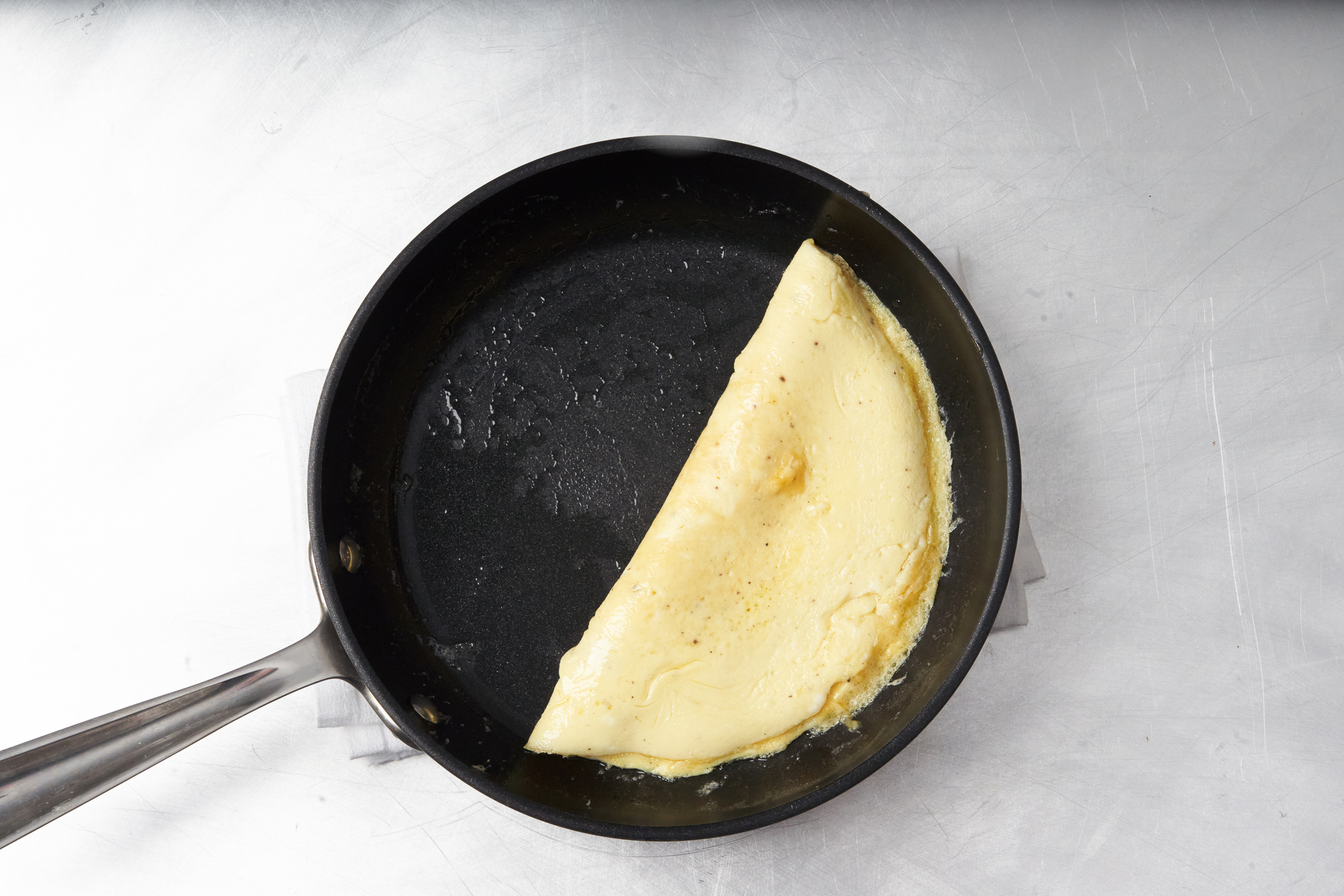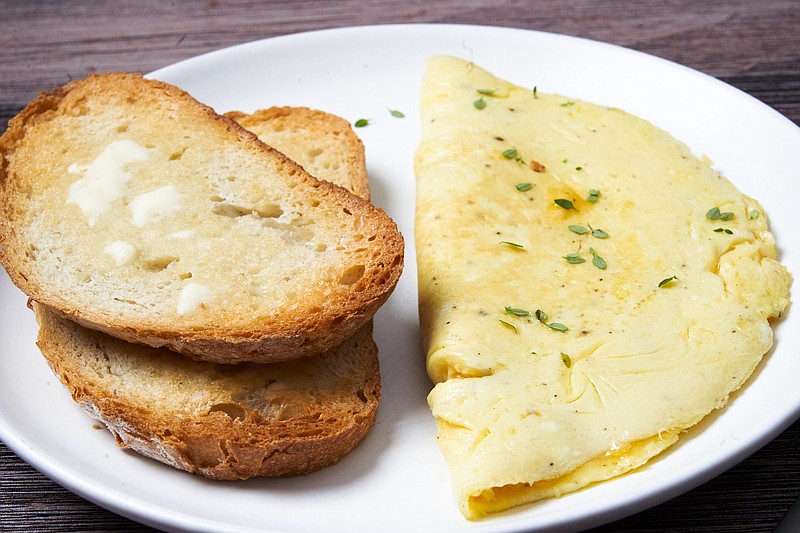At hotel breakfasts, fancy brunches or even the college dining hall, the omelet station always felt like the height of luxury to me. Omelets hold a revered, almost mythical position in popular and culinary culture as well, whether it's the hypnotic comfort of famed French chef and cookbook author Jacques Pepin demonstrating his recipe or watching Helen Mirren's character discover the bliss of a masala omelet made by the aspiring chef played by Manish Dayal in "The Hundred-Foot Journey."
But cooking a great omelet at home needn't be shrouded in mystery. If you already feel confident about your scrambled eggs, you're most of the way there. In "CookWise," Shirley O. Corriher explains: "Basically, omelets are glorified scrambled eggs. They start out the same way, and then, when the eggs are partially set but still juicy, they are folded over."
For me, that advice is exemplified by this Classic Folded Omelet, a mash-up of recipes from chef and cookbook author Michel Roux and cookbook author J. Kenji Lopez-Alt, along with some of my personal tweaks. Think of it as a cross between a French omelet and a diner-style omelet. It has the smooth and custardy texture of the French version, with the folded appearance and filling versatility of what you might get at a casual restaurant.
To me, it's the best of both worlds.
 Use a spatula to fold the omelet in half. (For The Washington Post/Jennifer Heffner) Classic Diner-Style Omelet
Use a spatula to fold the omelet in half. (For The Washington Post/Jennifer Heffner) Classic Diner-Style Omelet
- 3 large eggs
- Fine salt
- Ground black pepper
- 1 tablespoon unsalted butter
- Fresh herbs for garnish, such as thyme leaves, minced chives or chopped parsley (optional)
Break the eggs into a small bowl, season lightly with salt and pepper and, using a fork, lightly whisk to combine. Let them rest for at least 10 minutes (15 is even better) while you heat the skillet and prepare any possible fillings (see variation). Salting in advance helps keep the eggs tender during cooking.
Heat an 8-inch nonstick skillet over medium heat. Be sure you give it enough time to ensure the eggs start cooking right away. A few drops of water flicked on the surface should skitter and evaporate immediately. Add the butter to melt, swirling it to coat the bottom and sides of the pan.
Pour the eggs into the skillet and let the mixture set for 10 to 20 seconds, then use a spatula to start agitating the mixture, stirring until some curds begin to form. Lift the edges of the coagulated egg and tilt the pan to let the uncooked egg fill in the gaps. Repeat the process as you work your way around the entire pan. This part should take no more than 60 to 90 seconds. When the omelet has set on the bottom but still looks slightly wet but not runny on top, pull the pan off the heat and cover it with a tight-fitting lid or plate. Let rest until the eggs have reached your desired consistency, 1 to 2 minutes.
Use a spatula to fold the omelet in half and transfer to a plate. Sprinkle the herbs on top, if using, and serve hot.
Makes 1 to 2 servings.
Variation: To make a filled omelet, saute any vegetables (such as bell peppers, onion, mushrooms) first in butter or oil, over medium to medium-high heat. Transfer to a bowl, where you can mix with grated or crumbled cheese, if using. When the eggs are almost set, sprinkle your filling on half the omelet before removing from the heat and covering to rest. Then fold in half and serve.
